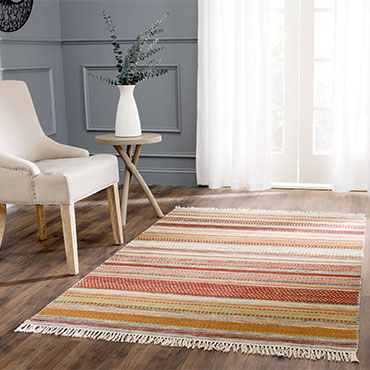

 Kilims are traditional flat-woven rugs without a pile, originating from regions such as Turkey, North Africa, Iran, and the Balkans. Known for their geometric patterns and vibrant, bold colors, Kilims are woven using a technique that creates clear, sharp designs, making them distinct and instantly recognizable. These rugs are typically made from wool, which contributes to their durability and warmth. Kilims are not only used as floor coverings but also as tapestries, pillow covers, and other decorative pieces due to their decorative flexibility and cultural significance. Lightweight and versatile, Kilims are prized in contemporary and traditional interiors alike for their ability to add a touch of artisanal craftsmanship and global flair to any setting.
Kilims are traditional flat-woven rugs without a pile, originating from regions such as Turkey, North Africa, Iran, and the Balkans. Known for their geometric patterns and vibrant, bold colors, Kilims are woven using a technique that creates clear, sharp designs, making them distinct and instantly recognizable. These rugs are typically made from wool, which contributes to their durability and warmth. Kilims are not only used as floor coverings but also as tapestries, pillow covers, and other decorative pieces due to their decorative flexibility and cultural significance. Lightweight and versatile, Kilims are prized in contemporary and traditional interiors alike for their ability to add a touch of artisanal craftsmanship and global flair to any setting.
Disclaimer: The information provided in this article is for general informational purposes only. While we strive to ensure the accuracy and reliability of the information presented, we make no warranties, express or implied, about the completeness, accuracy, reliability, suitability, or availability with respect to the content. Any reliance you place on such information is strictly at your own risk. We recommend consulting with professionals for specific advice tailored to your project’s needs, particularly regarding building codes, regulations, and product specifications.
Under no circumstances shall we be liable for any loss or damage, including without limitation, indirect or consequential loss or damage, arising from the use of, or reliance on, the information provided in this article.

